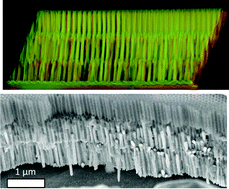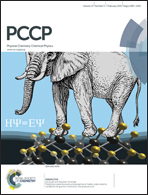Anodization control for barrier-oxide thinning and 3D interconnected pores and direct electrodeposition of nanowire networks on native aluminium substrates†
Abstract
Here we report a strategy for combining techniques for pore branching and barrier layer thinning to produce 3D porous anodized aluminum oxide films with direct ohmic contact to the native aluminum. This method provides an example of a rationally designed template which need not be removed from the aluminum, but which is also not constrained to traditional 2D pore geometry. We first demonstrate the barrier layer removal and pore branching techniques independently, and then combine them to produce free standing arrays of interconnected Ni nanostructures. Nickel nanostructures are deposited directly onto the aluminum to demonstrate the success of the structural modification, and showcase the potential for these films to be used as templates. This approach is the first to demonstrate the design and execution of multiple pore modification techniques in the same membrane, and demonstrates the first directly deposited 3D structures on aluminum substrates.


 Please wait while we load your content...
Please wait while we load your content...